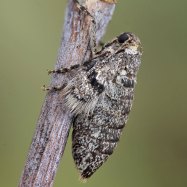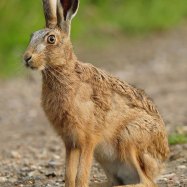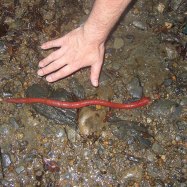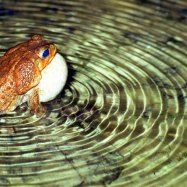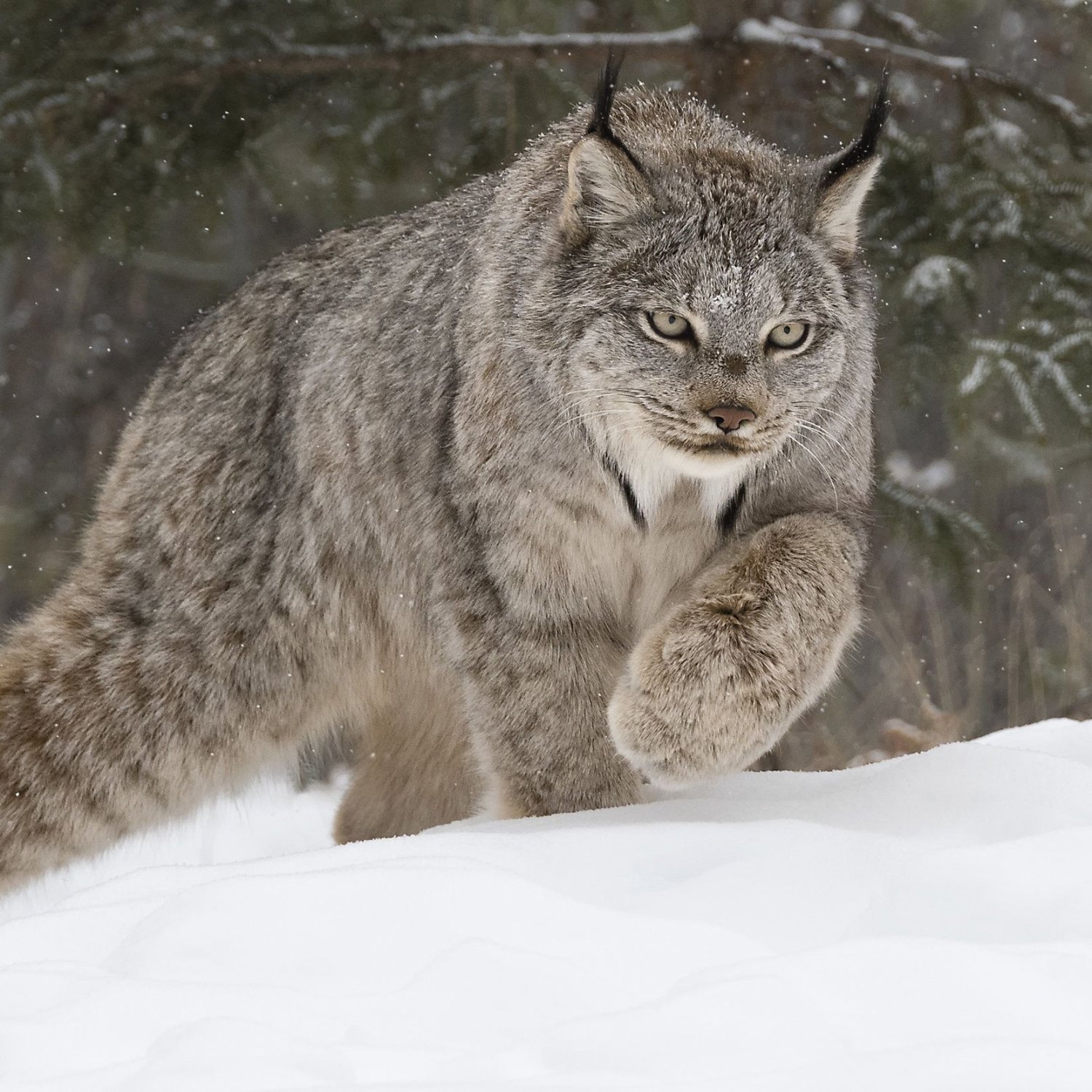
Canada Lynx
70-100 cm
The Canada Lynx, from the Felidae family, is a medium-sized cat with a body length of 70-100 cm. These beautiful creatures are mostly found in Canada and some parts of the United States. With their distinct tufted ears and majestic appearance, they are a sight to behold in the wild. Despite their name, they are not just limited to Canada, but their range extends across various regions. Keep an eye out for this elusive feline next time you're venturing in the northern parts of North America. #CanadaLynx #Felidae #WildlifeSpotting.
Animal Details Summary:
Common Name: Canada Lynx
Kingdom: Animalia
Habitat: Boreal forests
The Magnificent Canada Lynx: A Master of the Boreal Forests
In the vast boreal forests of North America, there roams a magnificent creature that embodies the true spirit of the wild. With its piercing eyes, majestic appearance, and elusive nature, the Canada Lynx is a true master of its habitat. This medium-sized cat, scientifically known as Lynx canadensis, is a highly adaptable and skilled hunter, making it a fascinating subject for naturalists and wildlife enthusiasts alike.The Canada Lynx belongs to the kingdom Animalia and the phylum Chordata, placing it in the same category as all other mammals Canada Lynx. It belongs to the family Felidae, making it a close relative of other cats such as lions, tigers, and domestic felines. However, unlike its larger cousins, the Canada Lynx primarily inhabits the boreal forests and is well-suited to thrive in this unique ecosystem.
The Wild Habitat of the Canada Lynx
The boreal forests, also known as the taiga, can be found in the northern regions of Canada and some parts of the United States. These vast coniferous forests offer the perfect environment for the Canada Lynx to thrive. With its dense vegetation, harsh winters, and abundant prey, the boreal forests provide everything that the Canada Lynx needs to survive.This elusive cat is a master at blending into its surroundings. Its grayish-brown fur acts as the perfect camouflage against the dark trees and bushes of the boreal forests. This helps the Canada Lynx move around unnoticed, making it an excellent hunter. It is also well-known for its impressive agility and stealth, allowing it to navigate through the dense vegetation and surprise its prey California Kingsnake.
The Fierce Carnivore
Although the Canada Lynx is a medium-sized cat, it is a fierce and skilled hunter. As a carnivore, its diet mainly consists of other animals, such as hares, rodents, and a variety of birds. It is also known to occasionally hunt larger prey, such as deer, when food is scarce. The Canada Lynx is a solitary hunter that relies heavily on its exceptional sense of sight, hearing, and smell to track down its prey.Once the Canada Lynx has its target in sight, it uses its powerful hind legs to leap up to 10 feet in the air and pounce on its prey. Its sharp and retractable claws help it grab and immobilize its victims, while its sharp teeth make quick work of the kill. With its keen instincts, speed, and agility, the Canada Lynx is a formidable predator in the boreal forest.
The Canada Lynx's Geographical Distribution
As its name suggests, the Canada Lynx is primarily found in Canada. However, it can also be found in some regions of the United States, including Alaska, Washington, Montana, and Colorado. Its geographical distribution is not limited to the boreal forests, as it can also be found in mountainous areas and other remote regions.One of the main reasons for the Canada Lynx's wide distribution is its adaptability. This animal is well-suited to survive in different environments, making it a highly resilient and successful species. However, despite its ability to thrive in various habitats, the Canada Lynx is still vulnerable to changes in its environment, particularly the loss of its boreal forest habitat.
A Vital Part of Canada's Ecosystem
The Canada Lynx plays an essential role in maintaining the balance of Canada's boreal forests. As a predator, it helps control the populations of its prey, preventing them from overgrazing and potentially damaging the forest ecosystem. The Canada Lynx also helps disperse plant seeds as it roams around, contributing to the growth and diversity of the plant life in its habitat.Moreover, the Canada Lynx is also a crucial indicator of the health of the boreal forests. Its presence, or lack thereof, can provide valuable information on the state of the ecosystem and any potential threats to it. As such, the conservation and protection of the Canada Lynx are crucial for the long-term preservation of Canada's boreal forests.
The Threats Facing the Canada Lynx
Despite its resilience, the Canada Lynx faces various threats in its environment. One of the most significant dangers is the loss of its habitat due to human activities, such as logging, mining, and development. The fragmentation of the boreal forests has a significant impact on the Canada Lynx's ability to hunt, reproduce, and thrive, pushing it closer to extinction.Furthermore, the Canada Lynx is also at risk from climate change. The changing temperature and weather patterns in the boreal forests can alter the prey populations, making it challenging for the Canada Lynx to find food. It can also affect their breeding and survival rates, ultimately leading to a decline in their numbers.
Efforts to Protect the Canada Lynx
To ensure the long-term survival of the Canada Lynx, various conservation organizations, and government agencies have initiated efforts to protect this iconic species. The Canadian government has designated the Canada Lynx as a species of special concern and has implemented measures such as the Species at Risk Act to safeguard its population.In addition, conservationists are working to educate the public on the importance of preserving the boreal forests and the species that call it home. Efforts are also being made to reduce human impact on the forests and promote sustainable practices that benefit both humans and wildlife.
The Unmatched Beauty of the Canada Lynx
Aside from its role in the ecosystem and the threats it faces, the Canada Lynx has a unique innate beauty that captivates anyone who has the privilege of spotting one in the wild. Its iconic tufted ears, soulful eyes, and graceful movements make it a sight to behold. However, many people have never even heard of the Canada Lynx or are unaware of its current status as an at-risk species.Through education and conservation efforts, it is possible to raise awareness of the Canada Lynx and encourage more people to appreciate its unmatched beauty. With its rich natural heritage, Canada has a responsibility to protect and preserve this majestic and elusive creature for future generations to admire and learn from.
A True Master of the Boreal Forests
In conclusion, the Canada Lynx is a remarkable creature that has evolved to thrive in the harsh conditions of the boreal forests. Its impressive hunting skills, adaptability, and vital role in the ecosystem make it a true master of its habitat. However, this iconic species is at risk, and it is our responsibility to safeguard its future and that of the forests it calls home. Let us work together to preserve the magnificent Canada Lynx and ensure its continued presence in the wild.

Canada Lynx
Animal Details Canada Lynx - Scientific Name: Lynx canadensis
- Category: Animals C
- Scientific Name: Lynx canadensis
- Common Name: Canada Lynx
- Kingdom: Animalia
- Phylum: Chordata
- Class: Mammalia
- Order: Carnivora
- Family: Felidae
- Habitat: Boreal forests
- Feeding Method: Carnivorous
- Geographical Distribution: North America
- Country of Origin: Canada
- Location: Mostly found in Canada and some parts of the United States
- Animal Coloration: Grayish-brown
- Body Shape: Medium-sized cat
- Length: 70-100 cm
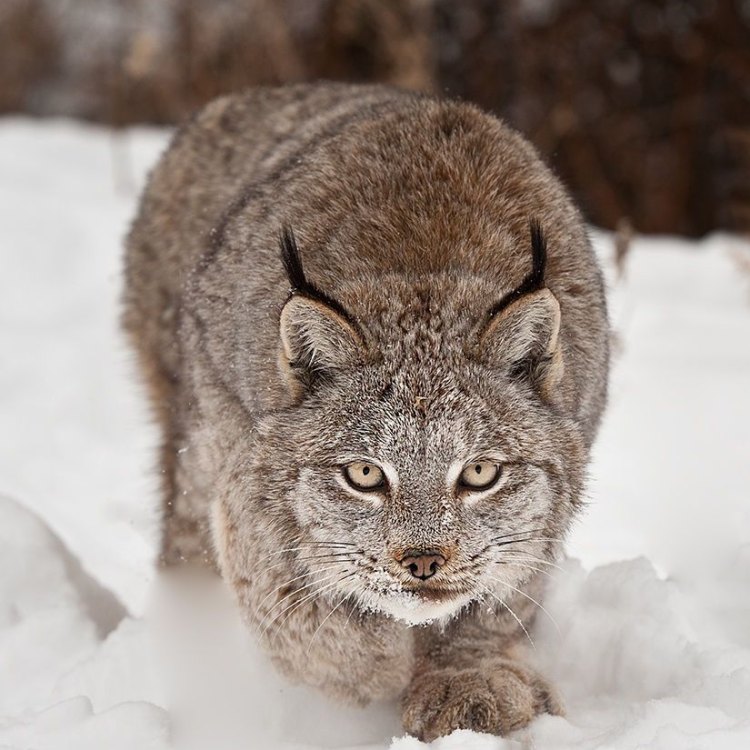
Canada Lynx
- Adult Size: Medium
- Average Lifespan: 10-15 years
- Reproduction: Sexual
- Reproductive Behavior: Polygamous
- Sound or Call: Yowls and purrs
- Migration Pattern: Non-migratory
- Social Groups: Solitary
- Behavior: Mainly nocturnal
- Threats: Habitat loss and fragmentation, climate change, prey decline, hunting
- Conservation Status: Least Concern
- Impact on Ecosystem: Important predator in the boreal ecosystem
- Human Use: Fur trade
- Distinctive Features: Tufted ears and a short tail with a black tip
- Interesting Facts: Canada Lynx have large, furry paws which act as snowshoes to help them navigate deep snow
- Predator: Mainly humans
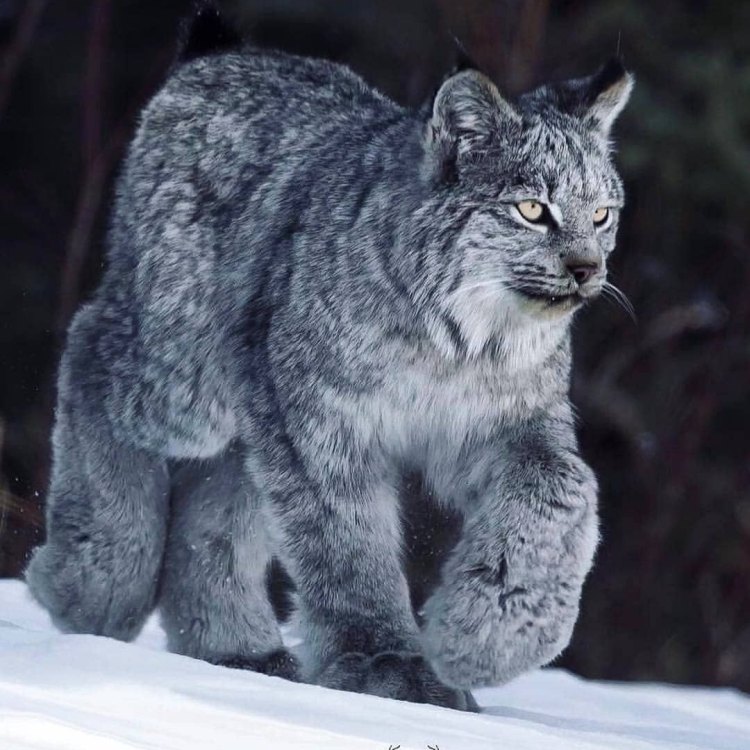
Lynx canadensis
The Elusive Canada Lynx: A Fascinating Feline of the Boreal Forest
When we think of the majestic creatures that roam the vast landscapes of Canada, images of grizzlies, wolves, and moose often come to mind. But hidden within the depths of the boreal forest, there lies another fascinating and elusive predator – the Canada Lynx.The Canada Lynx (Lynx canadensis), also known as the Canadian Lynx, is a medium-sized wild cat native to North America. It is one of three species of lynx found in the world, with the other two being the Eurasian Lynx and the Iberian Lynx PeaceOfAnimals.Com.
These beautiful felines have captured the imagination of many with their distinctive features and unique behaviors. In this article, we will delve deeper into the world of the Canada Lynx and explore what makes them such a special and important part of the Canadian ecosystem.
Adult Size and Average Lifespan
The Canada Lynx is a medium-sized cat, with a weight ranging from 18 to 24 pounds for males and 16 to 21 pounds for females. They have a body length of 32 to 40 inches and a shoulder height of 18 to 22 inches. Along with their large, furry paws, these dimensions make them well-adapted for living in the snowy and rugged terrain of their habitat.
In the wild, Canada Lynx have an average lifespan of 10 to 15 years. However, they have been known to live up to 21 years in captivity.
Reproduction and Reproductive Behavior
The Canada Lynx is a sexual species, meaning they require a male and female to reproduce. They reach sexual maturity at around 20 months of age, and breeding occurs between March and April Caribou. Females are only receptive to mating for a short period of time, making it crucial for males to find and court a mate quickly.
Once a pair has successfully mated, the female will give birth to a litter of 1-6 kittens after a gestation period of around 63 days. The female provides sole care for the kittens, and they will stay with her for up to 10 months before venturing out on their own.
Reproductive behavior is polygamous in Canada Lynx, meaning that males can mate with multiple females during breeding season. This behavior ensures a diverse gene pool and increases the chances of successful reproduction.
Sound or Call
The Canada Lynx is a relatively quiet animal, with their main vocalizations being yowls and purrs. They use these sounds to communicate with each other, especially during breeding season when males and females are trying to locate each other.
These vocalizations are also used to defend territory and warn off potential predators or threats.
Migration Pattern and Social Groups
Unlike many other animals in the boreal forest, Canada Lynx are non-migratory. They are known to have large territory sizes, with a male's territory overlapping several female territories. These territories are marked by scent and territorial calls, which help to reduce potential confrontations between lynx.
Canada Lynx are solitary animals, and aside from mating and raising young, they typically avoid others of their kind. This behavior is likely due to competition for food and territory.
Behavior and Unique Adaptations
Canada Lynx are mainly nocturnal, meaning they are most active at night. This behavior is likely an adaptation to avoid competition with other predators, such as wolves, during the day.
These elusive cats have incredible agility and are skilled climbers, known to effortlessly navigate the branches of trees. They are also excellent swimmers, able to cross rivers and lakes in their search for prey.
One of the Canada Lynx's most distinctive features is its tufted ears, which are larger and more prominent than other lynx species. These tufts of fur are thought to enhance their hearing, helping them to locate prey in the snowy and densely forested areas they inhabit.
Another unique adaptation of the Canada Lynx is their large, furry paws. These paws act as natural snowshoes, helping the cats to navigate and hunt in deep snow. The fur on their paws also acts as insulation, keeping them warm in their cold and snowy habitat.
Threats and Conservation Status
Despite their elusive nature and important role in the ecosystem, Canada Lynx face many threats, putting their population at risk. Habitat loss and fragmentation, mainly due to human activities such as logging and development, are major concerns for these cats.
Climate change is also a significant threat, bringing about changes in the boreal forest, such as an increase in fires and a decline in prey populations. In areas where the Canada Lynx's main prey, the snowshoe hare, is declining, the lynx have been observed preying on other species, such as grouse and rabbits. This change in diet may impact their survival and reproductive success.
Additionally, hunting for their fur has historically been a threat to the Canada Lynx. These cats were heavily hunted for their soft, thick fur during the 19th and 20th centuries, almost leading to their extinction. Although the demand for lynx fur has decreased, legal and illegal trapping still occurs, posing a threat to their population.
Currently, the Canada Lynx is listed as Least Concern on the IUCN Red List, meaning they are not currently facing a significant risk of extinction. However, they are protected in many parts of their range, and monitoring of their population continues to ensure their survival.
Impact on the Ecosystem
As predators, Canada Lynx play an important role in maintaining the balance of the boreal forest ecosystem. They primarily prey on snowshoe hares, which helps to control their population, preventing overgrazing and enabling the vegetation to regenerate.
Without the Canada Lynx, there could be a significant increase in snowshoe hares, which could potentially lead to a decline in species that the hares feed on, such as plants and small shrubs. This decrease in vegetation could have a domino effect on the entire ecosystem, affecting other species such as birds, rodents, and other predators.
Human Use – The Fur Trade
Unfortunately, humans have had a long and complicated relationship with Canada Lynx. As mentioned earlier, these cats were heavily hunted for their fur in the past, which nearly led to their extinction. However, the fur trade has played a significant role in Canada's history and economy.
Today, the Canada Lynx is still legally trapped for their fur, and their pelts are sold to create fashion items such as coats, hats, and scarves. The trapping of lynx is regulated by government agencies, and strict quotas are set to ensure sustainable harvesting.
Although the fur trade plays a role in the economy, there are also concerns about animal ethics and sustainable practices. As awareness grows about the importance of protecting these animals, there has been a shift in attitudes towards the fur trade, with many people choosing alternatives rather than wearing real fur.
Interesting Facts about Canada Lynx
-Canada Lynx have a remarkable ability to leap up to 10 feet in distance and 7 feet in height, making them skilled hunters.
– The Canada Lynx is a solitary animal, with the exception of females caring for their young and briefly during the mating season.
-These cats are rarely seen in the wild due to their elusive nature and stealthy behavior.
-Canada Lynx have keen eyesight and can see up to six times better than humans.
-In addition to their keen eyesight, Canada Lynx have a strong sense of smell, which helps them track and locate prey.
-In the 19th century, it was believed that Canada Lynx had magical powers and that their body parts could cure diseases.
-Canada Lynx can survive three weeks without food, making them well-adapted to the harsh winter months in their habitat.
-Although they may occasionally prey on domestic livestock, Canada Lynx primarily feed on wild prey, helping to control populations of hares and other small mammals.
Predator – Human Interactions
Despite being a formidable predator, humans have had the most significant impact on the Canada Lynx population. Through habitat destruction, climate change, and hunting, humans continue to be the main threat to these elusive felines.
Other predators, such as wolves and coyotes, may occasionally prey on Canada Lynx, but they do not pose significant threats to their population. In fact, Canada Lynx may even benefit from the presence of large predators as they create a more diverse prey pool and may indirectly benefit from their hunting efforts.
But ultimately, the biggest threat to the Canada Lynx remains human activities and the need for conservation efforts to ensure their survival.
A Fascinating and Vital Species
The Canada Lynx may be a relatively unknown and elusive animal, but its impact on the boreal ecosystem is immense. These beautiful cats play a crucial role in maintaining balance and diversity in their habitat, and their survival is intertwined with the survival of many other species.
Through conservation efforts and responsible management practices, we can ensure the Canada Lynx continues to thrive in the wild and remains a vital part of the Canadian wilderness for generations to come.
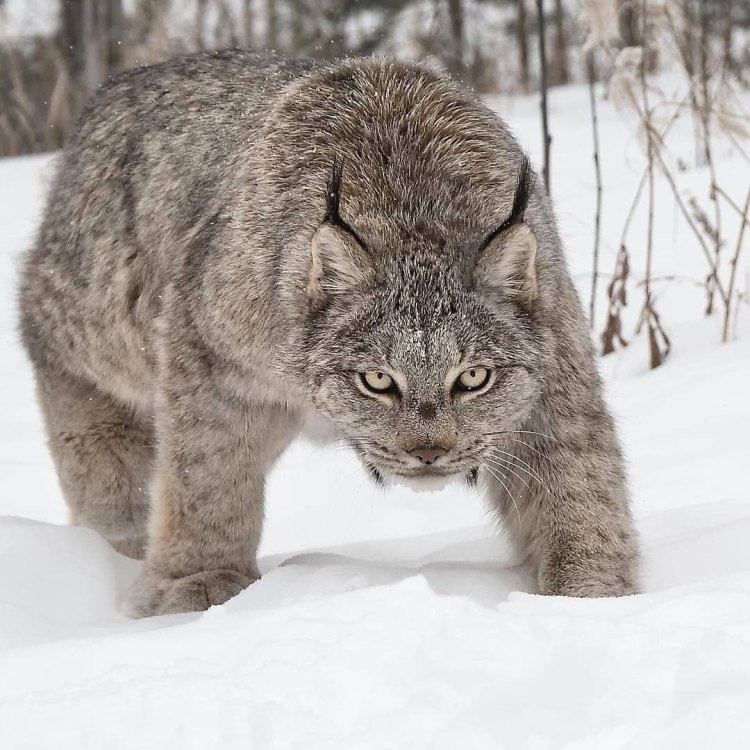
The Magnificent Canada Lynx: A Master of the Boreal Forests
Disclaimer: The content provided is for informational purposes only. We cannot guarantee the accuracy of the information on this page 100%. All information provided here may change without prior notice.





